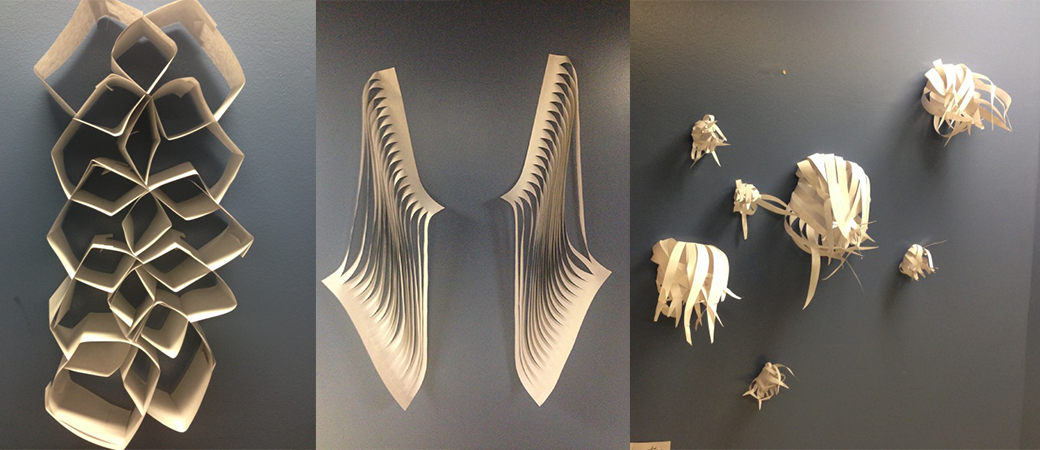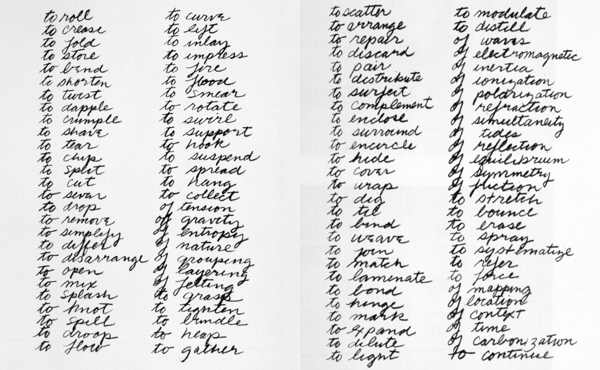
To connect / To flow / To breathe
This exercise in creativity can be done independently to spark inspiration, or in a classroom to engage students in creating their own connections between actions and visuals. Get the juices flowing by watching Richard Serra’s Exclusive film, “Tools & Strategies” to learn how a contemporary artist uses this same exercise in his artistic practice.
In this activity, you transform sheets of paper into abstract representations of verbs to gain a more elemental understanding of the applications and characteristics of certain kinds of action. The only materials required are paper, scissors, and perhaps tape or a stapler.
Step 1: Write down a list of verbs. Start with the first ones that come to mind then expand, challenging yourself to think up verbs that are playful or used infrequently. Make it bold. Fill the page.

Richard Serra. Verb List. 1967–68. Graphite on paper, 2 sheets, each 10 x 8″ (25.4 x 20.3 cm). The Museum of Modern Art, New York. Gift of the artist in honor of Wynn Kramarsky. © 2011 Richard Serra/Artists Rights Society (ARS), New York.
Step 2: Take a sheet of large, reused, or donated paper and create your own visualization of the verb. Try letting the paper serve as the subject that’s actively [insert your verb here]-ing. Think about “easy imagery” and work to avoid it. For example, if you’re trying to visualize stir, making the image of a spoon only visualizes a noun that’s associated with your verb, and not the verb itself.
Step 3: [I recommended this step take place on the second day in a classroom setting so students have time to digest the concept.] Repeat step one, but this time with a partner. Explore a new set of verbs you come up with together, using donated or reused paper to represent both of your favorite verbs. Notice how your process changes when collaborating with someone else versus working on your own.
Step 4: [I recommended this step take place on the third day in a classroom setting.] Select your favorite verb construction and collaborate with your partner to create an expanded version.

Richard Serra’s “to tear.” Tearing Lead From 1.00 to 1.47, 1968. Courtesy of the artist and David Zwirner.
This can include table-top works intended to be viewed from the top and sides, or “wall works” where the piece is hung up and seen against a wall. For these wall works, you can cut shapes into the paper to reveal the wall behind it, or play with the wall as a background and construct a paper sculpture that projects out from it.
Homework/Extra Credit: In my class, I assigned homework that asked students to make a short video (15-30 seconds) of their paper construction of the verb.
Looking for more? There’s also a version of this lesson plan with discussion questions on TED’s Education site, TEDEd.




Pingback: This Week in Art: 7.11-7.17 | ART21 Magazine